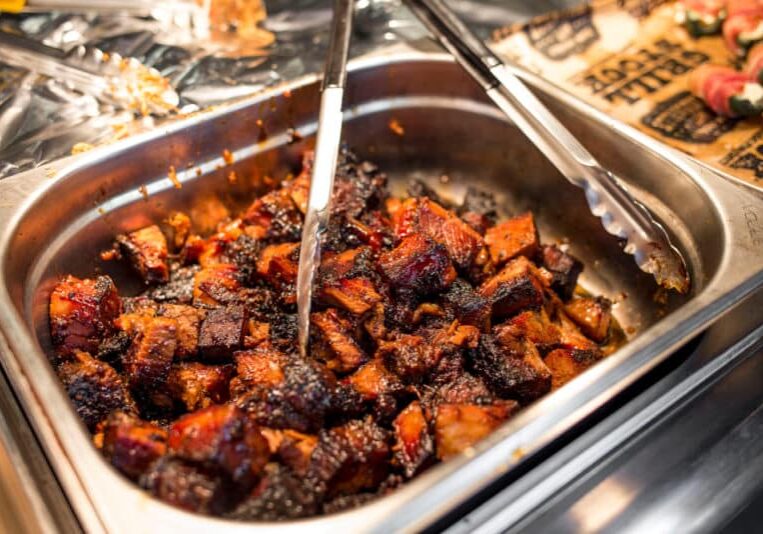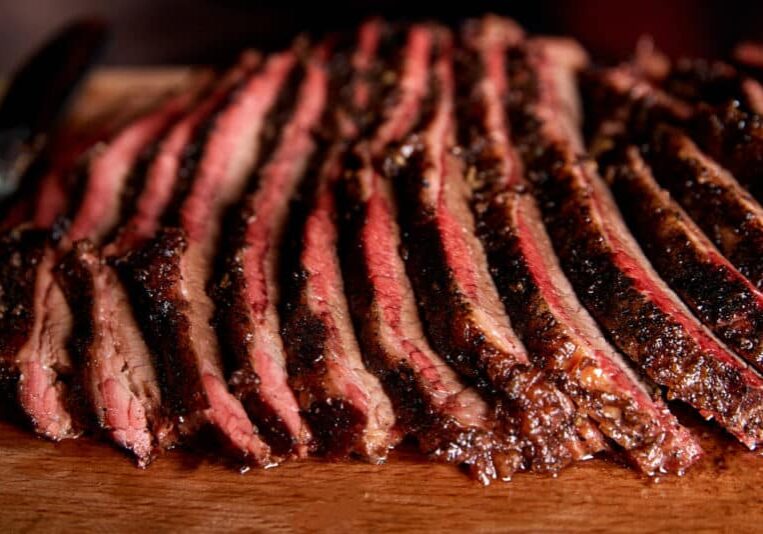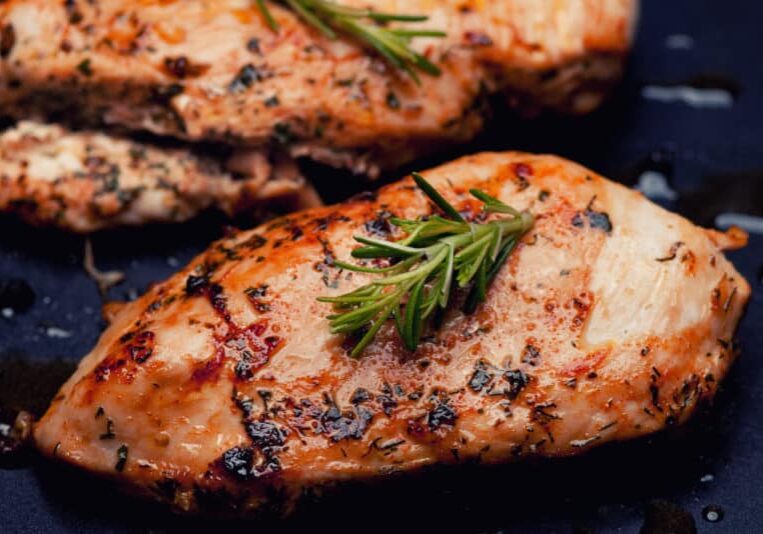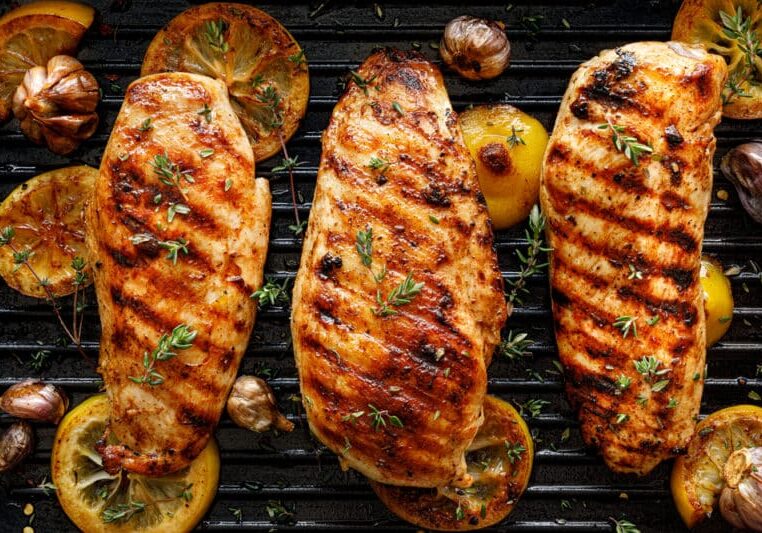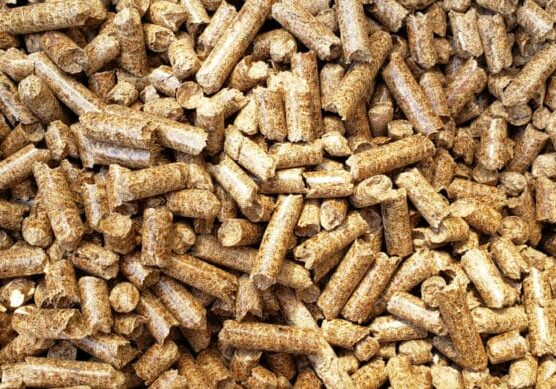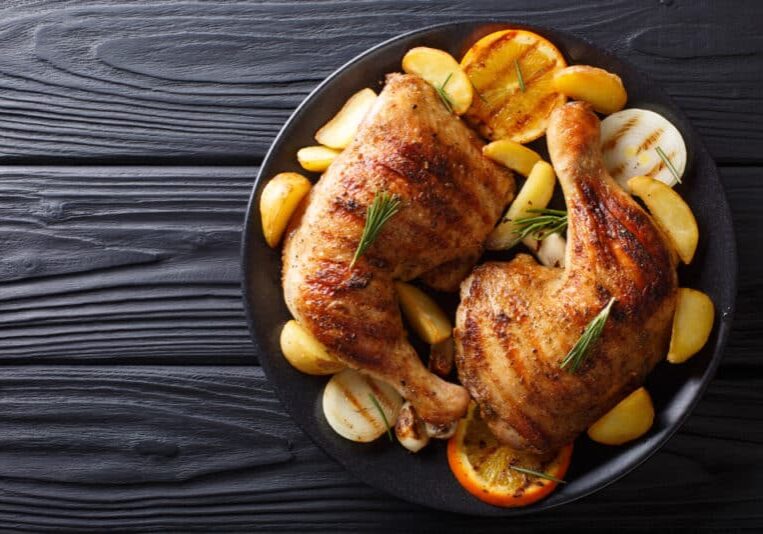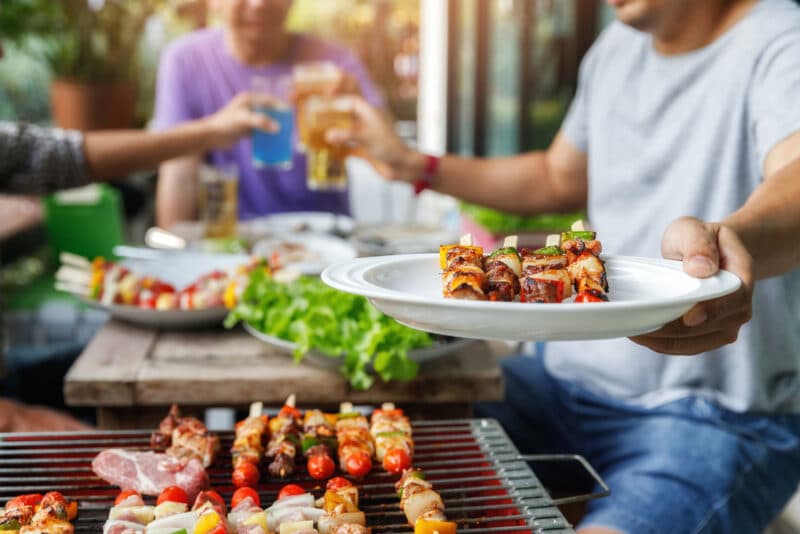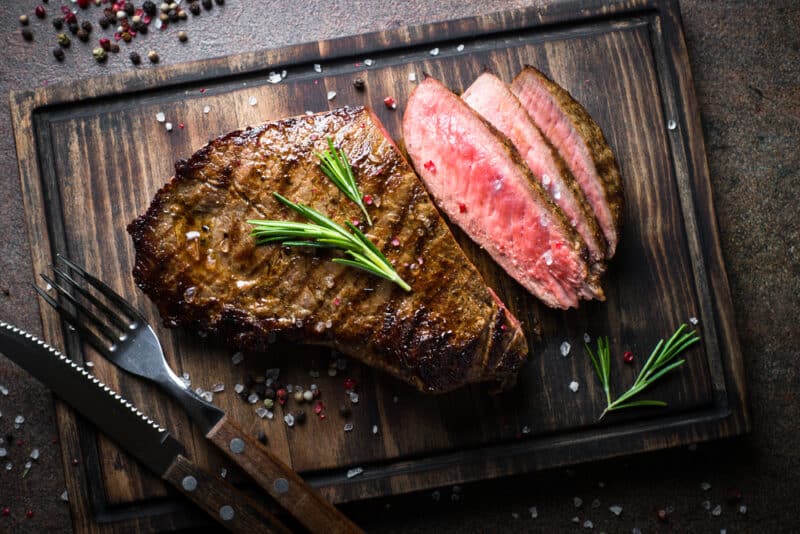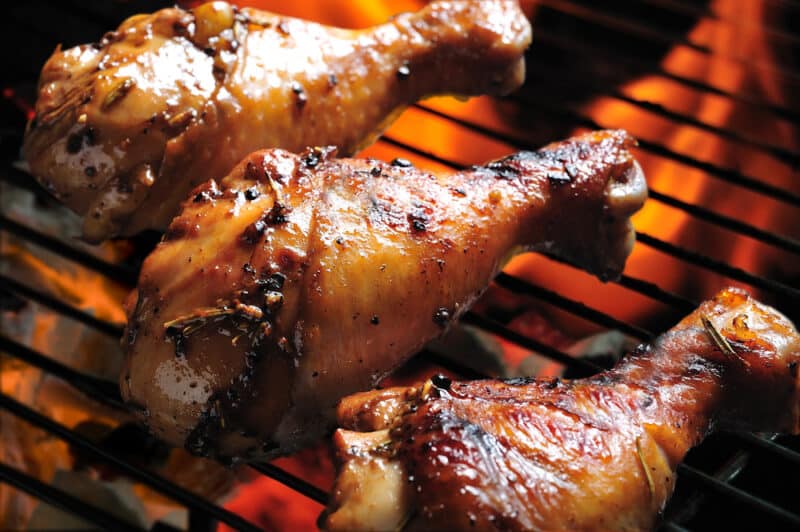How to Dry Age Prime Rib: A Complete Guide
TheGrillingMaster.com is reader-supported. If you buy something using the links on our site, we might earn an affiliate commission at no added cost to you. This helps us pay our staff to keep making awesome content for you!
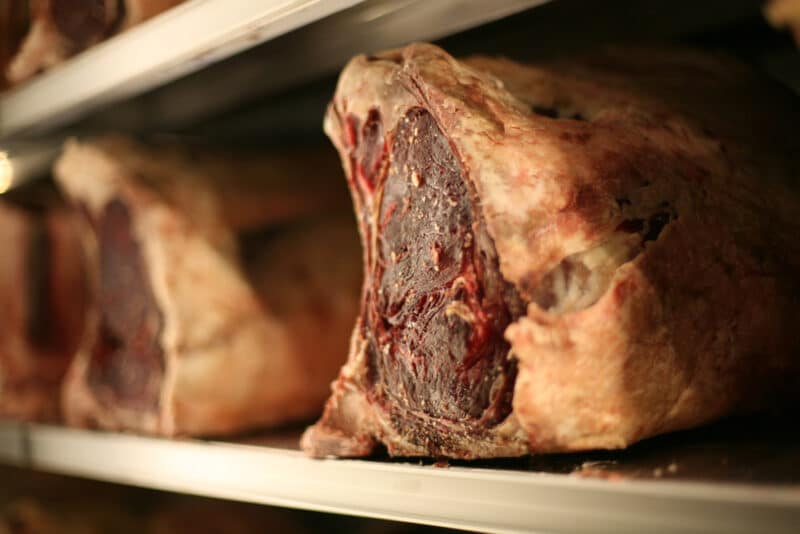
You might have heard about the delicious and flavorful prime rib if you love to grill and eat delicious meats. This cut of beef is known for its tenderness, marbling, and juiciness. That makes it a popular choice for special occasions and holiday meals. However… did you know that dry aging can enhance the flavor and texture of prime rib even more? In this article, I will will explore the process of dry aging prime rib. I’ll go step-by-step, and discuss some tips and tricks for achieving the best results so that you can follow along.
What is Dry Aging?
Dry aging is a process that involves aging meat in a controlled environment with low humidity and a constant temperature for several weeks. During this time the meat’s natural enzymes break down the muscle fibers. Breaking down the muscle fibers tenderizes the meat. While this is happening it allows the moisture evaporates which will intensify its flavor. The end result is a meat cut that is richer, more tender and more flavorful than its fresh counterpart.
Choosing the Right Cut of Prime Rib
The first step in dry aging prime rib is choosing the right cut of meat… and this is honestly always going to be the most important step when it comes to serving a delicious prime rib. You need to look for a bone-in prime rib roast that has a thick layer of fat on top. The fat will help to insulate the meat during the aging process and it will also add flavor and moisture to the meat as it cooks.
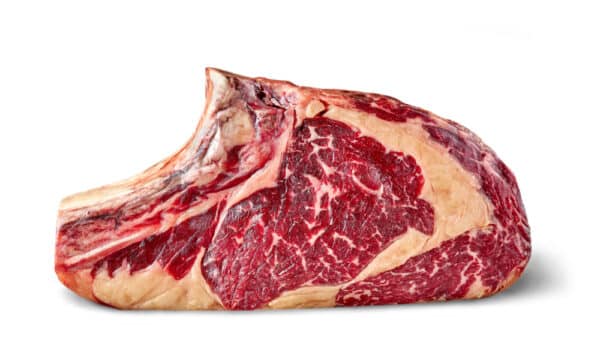
Preparing the Meat for Dry Aging
You need to prepare the meat before you start the dry aging process. To start you will remove the prime rib from its packaging and pat it dry with paper towels. Then, trim any excess fat and silver skin from the meat (very important to remove the silver skin or else it wont come out right!).
Pro Tip: You can also tie the meat with butcher’s twine to help it keep its shape during the aging process. I prefer to always do this myself.
Make sure you plan ahead and have the right amount of prime rib per person.
Setting Up the Dry Aging Environment
The next step is to set up the dry aging environment.
You can dry age prime rib in a few different ways but the most common method is to use a dedicated dry aging refrigerator or a DIY dry aging setup. If you choose the DIY route, you will need a refrigerator with a fan, a temperature controller, and a humidity controller.
Set the temperature to between 34-38°F (1-3°C) and the humidity to around 65-70%. Make sure that the meat is not touching any surfaces and that there is enough space for air to circulate around the meat. You really should also place a small fan inside the refrigerator to improve air circulation.
Dry Aging the Prime Rib
Now it’s time to dry age the prime rib (finally…).
Place the meat on a wire rack and put it in the refrigerator. Leave it there for at least 14-21 days: depending on your preferences. Some people prefer a shorter aging time for a milder flavor while others prefer a longer aging time for a more intense flavor. It’s up to you.
During the aging process make sure you check the meat regularly for any signs of mold or spoilage. If you see any mold simply trim it off with a clean knife. If the meat starts to smell bad or has a slimy texture, it has gone bad, and you should discard it… then try again.
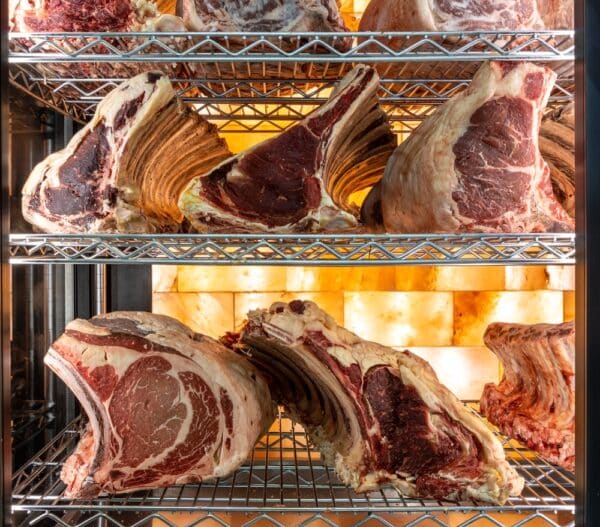
Preparing and Cooking the Dry Aged Prime Rib
Once the dry aging process is complete you will be ready to prepare and cook the prime rib. First remove the meat from the refrigerator and let it come to room temperature for about 2 hours. Then preheat your oven to 450°F (230°C).
- Rub the meat with a mixture of salt & pepper. You can also add any other seasonings you want such as garlic or rosemary.
- Place the meat in a roasting pan with the fat side up and roast it in the oven for about 15 minutes.
- Then, reduce the oven temperature to 325°F (160°C) and continue roasting for about 15 minutes per pound, or until the internal temperature reaches 120 degres. You can also continue to cook the meat for other preferred doneness levels: °F (49°C) for medium-rare or 130°F (54°C) for medium.
Related Reading>> See the best way to reheat prime rib.
Once the prime rib is cooked to your desired doneness you just simply remove it from the oven and let it rest for about 20-30 minutes before slicing. This will allow the juices to redistribute throughout the meat and therefore resulting in a more tender and flavorful cut.
Tips and Tricks for Dry Aging Prime Rib
- Always use high-quality, fresh meat for dry aging.
- Make sure the dry aging environment is clean and free of contaminants.
- Keep a close eye on the meat during the aging process to ensure that it stays fresh and doesn’t spoil.
- Use a dedicated refrigerator for your prime rib or DIY setup for dry aging to prevent cross-contamination with other foods.
- Trim any mold or excess fat from the meat before cooking.
- Let the meat come to room temperature before cooking to ensure even cooking and a tender result.
- Keep the prime rib warm while letting it sit out after cooking it.
Conclusion
Dry aging prime rib is a simple but effective way to enhance the flavor and texture of this already delicious cut of meat. With a little patience and attention to detail (and patience) you can achieve a mouth-watering result that will impress your family and friends. Remember to choose the right cut of meat and set up the dry aging environment correctly while you keep a close eye on the aging process. Happy cooking!
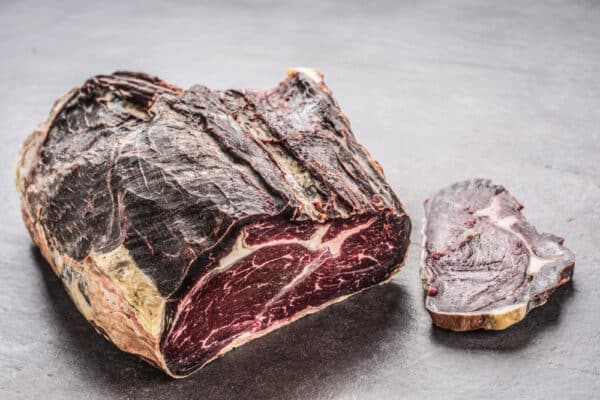
FAQs
-
How long should I dry age prime rib?
- It depends on your preferences, but most people age prime rib for 14-21 days.
-
Can I dry age prime rib in a regular refrigerator?
- Yes, but you need to use a dedicated refrigerator or DIY setup to prevent cross-contamination with other foods.
-
How do I know if my dry aged prime rib has gone bad?
- Check the meat regularly for any signs of mold or spoilage. If the meat starts to smell bad or has a slimy texture, it has gone bad, and you should discard it.
-
Do I need to trim the fat from the prime rib before dry aging?
- No, you don’t need to trim the fat, but you can trim any excess fat or silver skin before aging.
-
Can I dry age other cuts of meat besides prime rib?
- Yes, you can dry age other cuts of meat, such as ribeye or sirloin, but the results may vary
-
Can I dry age prime rib for too long?
- Yes, if you age the meat for too long, it can become too tough or develop an overly intense flavor. Aim for a maximum of 30 days for prime rib.
-
Should I salt the meat before or after dry aging?
- You should salt the meat after dry aging, as the aging process will intensify the saltiness of the meat.
-
Can I freeze dry aged prime rib?
- Yes, you can freeze dry aged prime rib, but it may affect the texture and flavor of the meat. It’s best to enjoy it fresh after aging.
-
Do I need to let the meat rest before slicing after cooking?
- Yes, letting the meat rest for about 20-30 minutes before slicing will allow the juices to redistribute throughout the meat, resulting in a more tender and flavorful cut.
-
What is the ideal temperature to cook dry aged prime rib?
- The ideal temperature for cooking dry aged prime rib is between 325-350°F (160-175°C), depending on your desired doneness.
Learn More About Grilling
If you want to learn more about grilling, check out these other helpful resources!

Patrick Harvey
Patrick is a life long grilling enthusiast with an eye for product development and user experience. His expertise helps us test and review all of the products you see the website.
About The Grilling Master
Hi there, I'm Kevin Turner, Founder and CEO of thegrillingmaster.com.
My passion has always been grilling, smoking and BBQ delicious meats that satisfy my inner carnivore!
I started this website to share my passion and knowledge with you, the hungry reader who wants to prepare the perfect meal.
You can leverage my years of experience as a pit master and professional.
Send me a message and let's connect on Twitter here.


